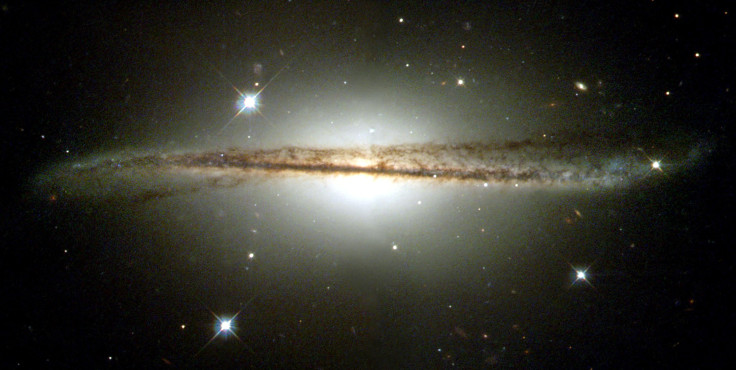Milky Way's Halo Is Clumpy And Into Recycling
KEY POINTS
- The Milky Way is surrounded by a halo of hot gas
- Researchers used data from a tiny satellite that has been observing the galaxy's halo
- The researchers found stronger X-rays in parts with more star formation
- Studying the halo could shed light on the mystery of the Universe's missing baryonic matter
Our galaxy has a halo of hot gases around it and a team of researchers found that it's actually into recycling. What could this mean about the mystery of the universe's missing baryonic matter?
The Milky Way, just like most disk and elliptical galaxies, is surrounded by what's known as a "circumgalactic medium" or a halo of hot gas. Our nearby neighbor, the Andromeda galaxy, also has this halo. And only recently, a team of researchers found that Andromeda's halo is actually so massive that it already touches the Milky Way's.
In a new study funded by NASA's Astrophysics Division, a team of astronomers discovered that the Milky Way's halo is actually "clumpy" and, that the galaxy may actually be supplying it with recycled materials from star activity.
For the study, the researchers used the observations of HaloSat, a 4 by 8 by 12 inches mini satellite and was first launched from the International Space Station (ISS) in 2018. Based on the tiny satellite's observations of the halo, the researchers determined that the Milky Way's halo has a "disk-like geometry," with the X-ray emissions being stronger in the parts where there is more star formation, corresponding author Professor Philip Kaaret of the University of Iowa (UI) said in the UI news release.
"That suggests the circumgalactic medium is related to star formation, and it is likely we are seeing gas that previously fell into the Milky Way, made stars, and now is being recycled into the circumgalactic medium," Kaaret added.

Why does this matter? This is because learning more about the Milky Way's halo could, in turn, also shed light on a much bigger mystery in the universe.
The team actually wanted to determine how massive the Milky Way's halo is, specifically whether it's many times the size of the galaxy. If it is, then it could provide clues about the baryonic matter that's been believed to be missing since the universe was born.
"If it's a huge, extended halo that is many times the size of our galaxy, it could house enough material to solve the missing baryon question," a NASA news release on the study said.
On the other hand, if the halo turns out to be composed mostly of the recycled material, then it’s unlikely to be hosting the missing baryonic matter, the UI news release explains.
Baryonic matter is different from the mysterious dark matter but it is also quite mysterious since scientists can only account for two-thirds of all the baryonic matters that should be in the Universe, the NASA news release added. The rest, as mentioned, has been missing.
This is exactly what HaloSat has been searching for as it studies the Milky Way's halo.
"It seems as if the Milky Way and other galaxies are not closed systems," Kaaret said in the UI news release. "They're actually interacting, throwing material out to the circumgalactic medium and bringing back material as well."
That said, the findings don't necessarily mean that the Milky Way's halo is composed mostly of recycled materials. In fact, Kaaret noted that the HaloSat data alone cannot determine whether the galaxy's halo is extended. It does, however, add to scientists' knowledge of this mysterious structure.
"What we've done definitely shows that there's a high-density part of the circumgalactic medium that's bright in X-rays, that makes lots of X-ray emissions," Kaaret said in the UI news release. "But there still could be a really big, extended halo that is just dim in X-rays. And it might be harder to see that dim, extended halo because there's this bright emission disk in the way."
For now, the researchers will add the HaloSat data to other X-ray data to help further characterize Milky Way's halo.
The study is published in Nature Astronomy.
© Copyright IBTimes 2024. All rights reserved.






















